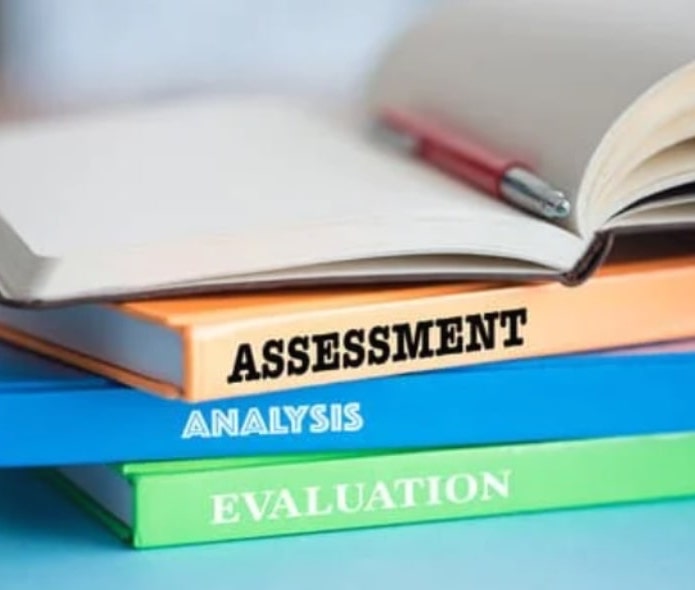Digital SAT Format Guide
The True Face of the Digital SAT: A Must-Read Perspective for Test Takers!
Welcome to your definitive guide to the Digital SAT! This page provides you with a comprehensive overview of the exam, blending precise details with innovative insights to enhance your preparation.
Prepare to explore the full spectrum of test dynamics, where clarity meets innovation in delivering the essential elements of the Digital SAT.
"Adaptive", of course!
The Digital SAT is divided into two sections: Reading and Writing, Math. Each section is further split into two modules:
Score Range
| Section | Score Range |
|---|---|
| Reading and Writing | 200-800 scale |
| Math | 200-800 scale |
| Total | 400-1600 scale |
When to Take the Digital SAT?
SAT Weekend
In contrast, SAT Weekend refers to the traditional format of the SAT, which is offered on specific Saturdays throughout the academic year, typically in March, May, June, August, October, September and December. This well-established option provides college-bound students with the flexibility and opportunity to take the SAT outside of school hours. The latest test dates have been released, and our online pre-assessment and study plan is a great place to start.
Students can choose the test date that works best for them and take the exam multiple times to improve their score, with many colleges considering only the highest score.
SAT School Day
As an SAT candidate, it's important to know your options for taking the test. SAT School Day is a valuable initiative that allows high school students, especially those in the 11th and 12th grades, to take the official SAT during school hours at your own school. To find out if and when your school will offer SAT School Day, you can contact your principal or counselor. This program is designed to make the SAT more accessible, particularly for students who might face challenges such as work obligations or transportation difficulties when trying to take the test on a Saturday.

Any school day in Spring testing window.Any school day in Fall testing window.
Learn the Overall Format of Digital SAT
Here we've provided the overall structure of the Digital SAT, highlighting the key components of the Reading & Writing and Math sections to help you understand what to expect on test day. Below, you will find detailed tables outlining the specifics of each section.
Reading & Writing
This section is split into two modules:
- Module 1 (Non-adaptive): 27 questions
- Module 2 (Adaptive): 27 questions
In total, the Reading & Writing section is composed of 54 four-option multiple-choice questions and the time allocated is 64 minutes.
You will be tested on the following content domains:
Information and Ideas
Craft and Structure
Expression of Ideas
Standard English Conventions
Math
This section is also split into two modules:
- Module 1 (Non-adaptive): 22 questions
- Module 2 (Adaptive): 22 questions
In total, the Math section is composed of 44 questions (≈75% four-option multiple-choice questions and ≈25% student-response questions) and the time allocated is 70 minutes.
You will be tested on the following content domains:
Algebra
Advanced Math
Problem-Solving and Data Analysis
Geometry and Trigonometry
How Does the Test Process work?
Understanding the test process for the Digital SAT is essential for your effective preparation. The exam is typically administered in a single day, lasting approximately 2 hours and 14 minutes, with an extra 10-min break. The test is organized into specific sections that must be completed sequentially. You will begin with the Reading & Writing sections, followed by the Math section. Importantly, you are not permitted to exit or submit a module early, so it's essential to manage your time wisely and ensure that you answer all questions before moving on.

The Ins and Outs of Real Digital SAT
Tips: The Easier Module 2 and Harder Module 2 labels indicate that certain testing points have a noticeably increased number of questions in their corresponding Module 2 versions.
Reading and Writing is the first section on the SAT. It features a wide variety of short passages (everything from science to poetry) paired with multiple-choice questions that test skills like vocabulary, grammar, and reading comprehension. According to the College Board (CB), here's the approximate percentage breakdown and question ranges for each domain:
- Craft and Structure (≈28% of the section, 13-15 questions overall)
- Information and Ideas (≈26% of the section, 12-14 questions overall)
- Standard English Conventions (≈26% of the section, 11-15 questions overall)
- Expression of Ideas (≈20% of the section, 8-12 questions overall)
The table covers everything you need to know about the SAT Reading and Writing section, including 4 content domains and corresponding testing ponits, question topics information, and clear question prompts for each testing ponit. Also, pay attention to the Easier/Harder Module 2 labels we marked for you!
During actual test, the testing points always appear in the same order, as shown in the table below, and questions within each testing point are presented in order of increasing difficulty.
What does "Craft and Structure" test?
Words in ContextEasier Module2
To fill in the blank with the word or phrase that best fits the passage, or to interpret the meaning of an underlined word.
The questions are fixed as:
"Which choice completes the text with the most logical and precise word or phrase?"
"As used in the text, what does the word or phrase...most nearly mean?"
Text Structure and Purpose
To identify how a passage is organized, determine the purpose of the text as a whole, or analyze how a smaller excerpt fits within the text's overall structure and purpose.
The questions are fixed as:
"Which choice describes the main purpose/structure of the text?"
"Which choice best states/describes the function of the underline portion/sentence...?"
Cross-Text Connections
To compare the points of view of two short passages (Text 1 and Text 2).
The questions are fixed as:
"Based on the texts, both Text 1 and Text 2 would most likely agree with which statement?"
"Based on the texts, what would the author of Text 1 most likely say about/respond to...described in Text 2?"
What does "Information and Ideas" test?
Central Ideas and Details
To determine the central idea, main reason, suggested content, conclusion, or consequence based on a short passage, or interpret and analyze key supporting information.
Question Topics: Literature; Scholarly essay
The questions are often asked like:
"Based on the text, what can be concluded about...?"
"What does the text best describe/most strongly suggest about...?"
"According to the text, what is true about...?"
"According to the text, what is one similarity/the difference between...?"
"Which choice best states the main idea of the text?"
Command of Evidence (Textual)Harder Module2
To find textual evidence (e.g., a fact, detail, or example) in the text to support, illustrate, challenge, or respond to a claim or point.
Question Topics: Science, Social Science; Literary work (e.g., a poem or novel)
The questions are fixed as:
"Which finding, if true, would most directly support/challenge/weaken the claim?"
"Which quotation most effectively illustrates the claim?"
Command of Evidence (Quantitative)
To find quantitative evidence (i.e., data from graphic information) to support, illustrate, challenge, or otherwise respond to a claim or point.
Information Graphics Types: Tables, bar graphs, line graphs, or any number of other formats that can be used to visually represent data.
The questions are fixed as:
"Which choice most effectively uses data from the table/graph to...?"
"Which choice best describes data from the table/graph that supports...?"
InferencesHarder Module2
To select the choice that most logically fills the gap in the text.
The questions are fixed as:
"Which choice most logically completes the text?"
What does "Standard English Conventions" test?
Boundaries
To link clauses using coordination, subordination, or punctuation; to format and punctuate supplemental information correctly.
The questions are fixed as:
"Which choice completes the text so that it conforms to the conventions of Standard English?"
Form, Structure, and SenseEasier Module2
To test your grasp of grammar rules related to subject-verb agreement, pronoun-antecedent agreement, verb forms, and placement.
The questions are fixed as:
"Which choice completes the text so that it conforms to the conventions of Standard English?"
What does "Expression of Ideas" test?
TransitionsEasier Module2
To select the most logical transition word or phrase to connect information and ideas within a brief passage. Focus on relationships: agreement/disagreement, sequence, addition, cause/effect.
The questions are fixed as:
"Which choice completes the text with the most logical transition?"
Rhetorical Synthesis
To effectively use relevant information from a series of bulleted notes to accomplish a particular goal.
The questions are fixed as:
".... Which choice most effectively uses relevant information from the notes to accomplish the goal?"
Focused Study Points for the Digital SAT
To help you maximize your preparation for the Digital SAT, we've analyzed the testing tendencies of various concepts in both the Easier and Harder Module 2. Here's a breakdown of essential areas to focus on based on your proficiency level.
If You're Targeting the Easier Module 2
Concentrate your efforts on the following concepts(our flashcard can help you):
- Reading and Writing Section: "Words in Context", "Form, Structure, and Sense", "Transitions"
- Math Section: "Linear Equations in One Variable", "Linear Equations in Two Variables", "Linear Functions", "Two-Variable Data: Models and Scatterplots", "Probability and Conditional Probability"
If You're Aiming for the Harder Module 2
Focus additional practice on these key concepts:
- Reading and Writing Section: "Command of Evidence (Textual)", "Inferences"
- Math Section: "Nonlinear Equations in One Variable and Systems of Two Linear Equations in Two Variables", "Nonlinear Functions", "Right Triangles and Trigonometry", "Circles"
Important Note:
Simply practicing these highlighted testing points won't guarantee a high score; they've been selected based on their complexity, comprehension demands, and logical requirements observed in real Digital SAT exams. Our research aims to provide you with more effective and practical study strategies. With this understanding, you can proceed to our question bank for targeted practice. Achieving a higher score requires action!
Essential SAT Prep Tools
Maximize your SAT preparation with our comprehensive suite of tools designed to enhance your study experience and track your progress effectively.
Personalized Study Planner
Get a customized study schedule based on your target score, available study time, and test date.
Expert-Curated Question Bank
Access 2000+ handpicked SAT questions with detailed explanations, organized by topic and difficulty level.
Smart Flashcards
Create and study with AI-powered flashcards featuring spaced repetition for optimal retention.
Score Calculator
Convert raw scores to scaled scores instantly and track your progress towards your target score.
SAT Skills Lessons
Master each SAT skill with progressive lessons and comprehensive guides, from foundational concepts to advanced techniques.
Full-Length Practice Tests
Experience complete SAT exams under realistic conditions with adaptive difficulty.
Pro Tip
Start your SAT prep journey by creating a personalized study plan 3-4 months before your test date. Use our time management tools to master pacing, combine mini-tests for targeted practice, and gradually progress to full-length practice tests. Regular review with flashcards and consistent practice with our question bank will help you stay on track with your study goals.